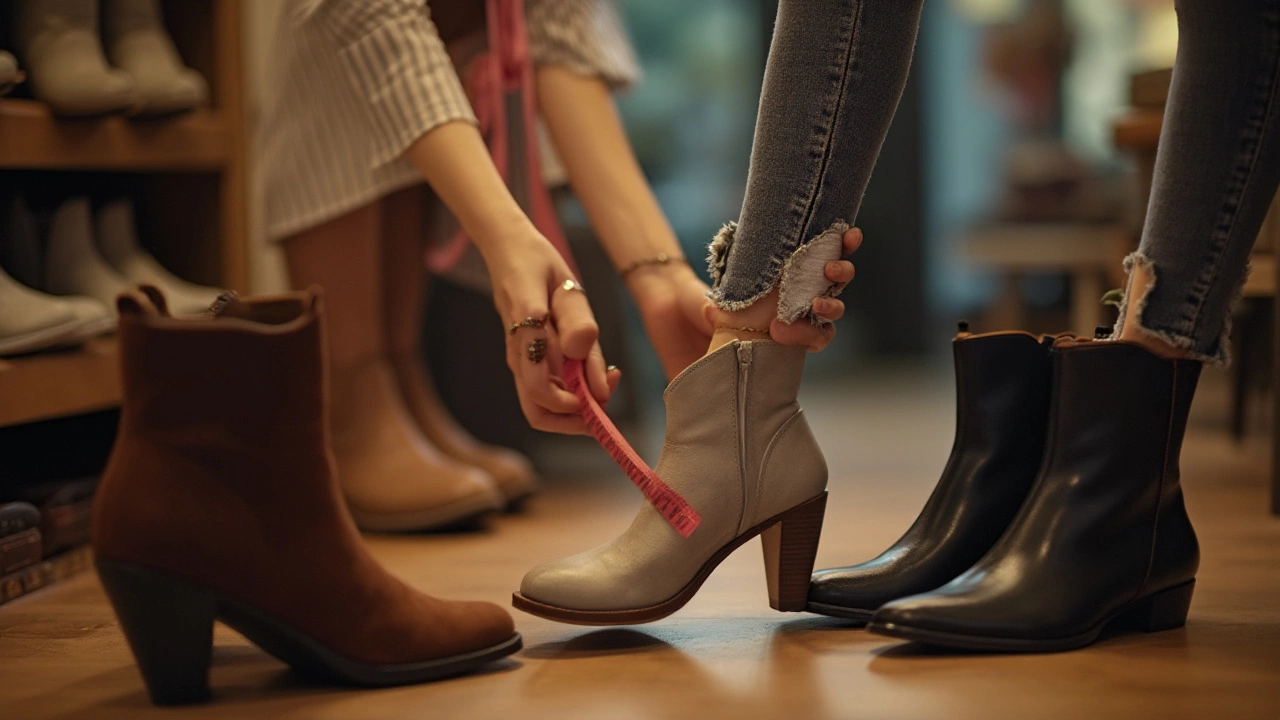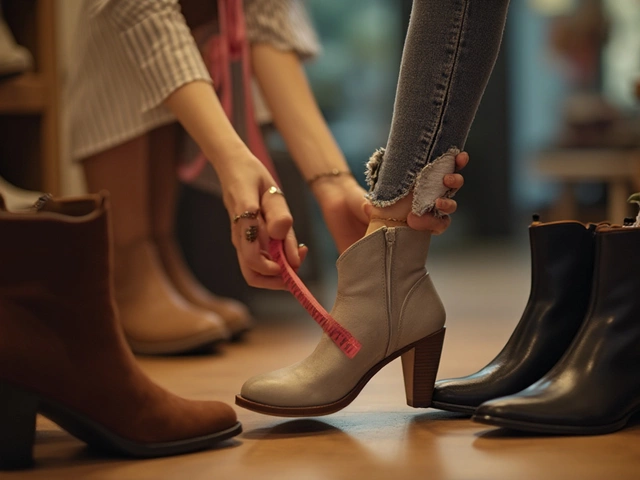Boot Fit: Simple Tips to Find the Right Size and Comfort
Choosing a boot that fits well can be a headache, but it doesn’t have to be. The right fit means no blisters, no slipping, and a shoe that feels like it was made just for you. Below are the basics you need before you click ‘add to cart.’
How to Measure Your Foot for Boots
Start with a piece of paper, a pen, and a ruler. Stand on the paper while wearing the socks you’ll use with the boots. Trace the outline of your foot, then measure the longest point from heel to toe. Do the same for the widest part of the ball of your foot. Most brands list a size chart that matches these measurements to a shoe size.
Next, consider the arch. If you have high arches, you’ll need a boot with more space in the mid‑foot. Flat feet usually need a little extra room in the heel to prevent sliding. Write down both numbers, then check the brand’s specific recommendations.
Key Fit Tips for Different Boot Styles
Work boots often have a tighter toe box to protect the foot, so you might need to size up a half size. For fashion boots, look for a little wiggle room—about a thumb’s width—so your foot can move when you walk.
When trying on ankle boots, make sure the heel sits snugly behind the back of your ankle. If it rubs or lifts, the boot is too loose. Mid‑calf boots should sit just above the calf muscle without cutting off circulation. You should be able to slide a finger comfortably between the boot and your skin.Don’t forget the lace‑up or strap sections. Tightening them should hold the boot in place without digging into your skin. If you have to keep pulling the strap tighter after a few steps, the boot is too small.
Walking around the house is the best test. Take a few steps, turn around, and see if any parts feel pinched. If you notice any hot spots after a minute, that’s a red flag. The boot should feel secure but not restrictive.
For women’s boots, many brands offer a ‘wide’ option. If the standard width feels tight around the ball of the foot, go wide. Men’s boots often have a ‘narrow’ version, which can work for slimmer feet.
Remember that leather will stretch a bit with wear, especially in the toe box. If the boot feels just a hair too tight, it will likely loosen up after a few wears. However, if it’s painful right away, walk away.
Finally, think about the socks you’ll wear. Thick wool socks add extra bulk, so you might need a larger size for winter boots. For lighter cotton socks, stick to your measured size.
By measuring accurately, checking arch type, and testing the boot’s movement, you’ll cut down on returns and enjoy a comfortable pair right away. Happy boot hunting!

Finding the Perfect Fit for Women's Thursday Boots: Toe Positioning Guide
Understanding the ideal toe position in women's Thursday boots is essential for comfort and style. The right fit can prevent discomfort and help maintain the boot's structure. This article dives into tips on measuring your foot, signs of a correct fit, and common mistakes to avoid. Additionally, it sheds light on maintaining comfort for various activities and the importance of considering foot shape and boot design.




